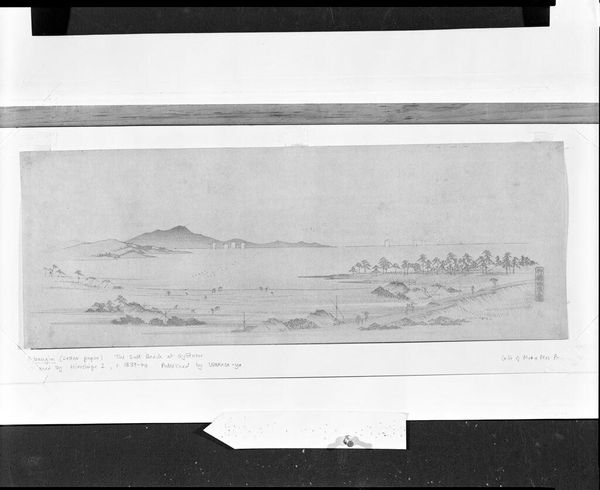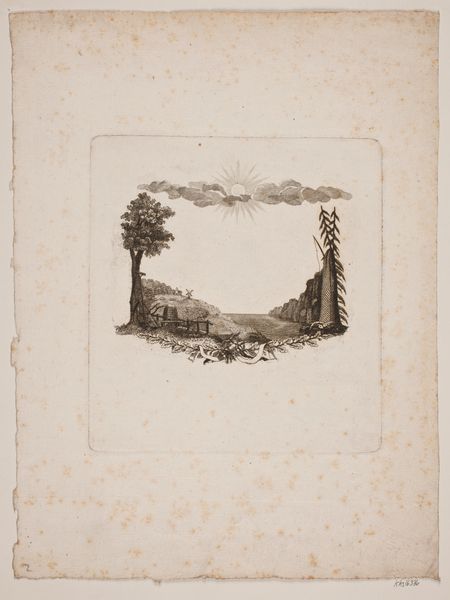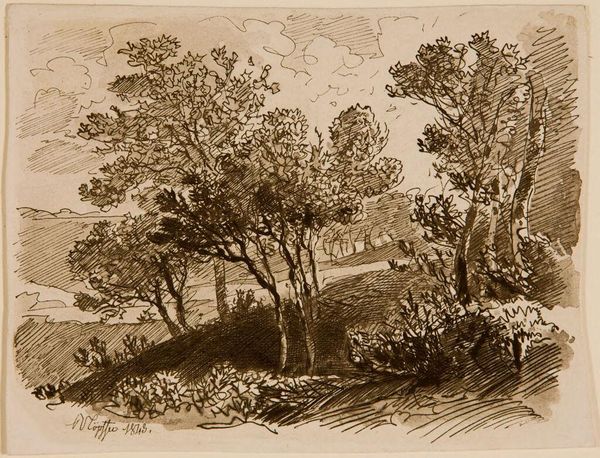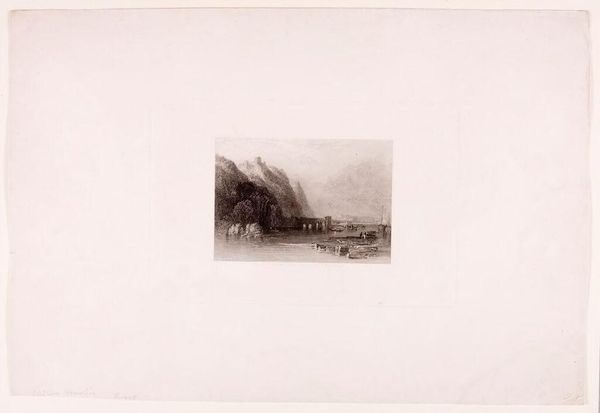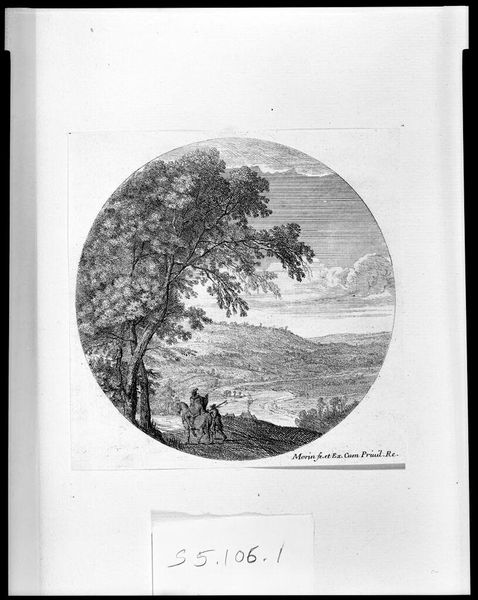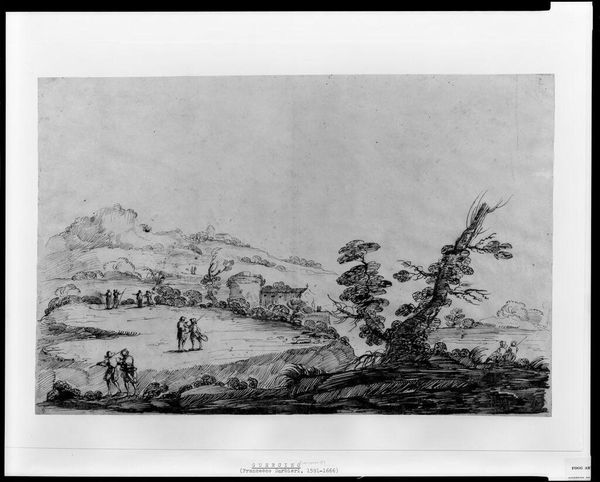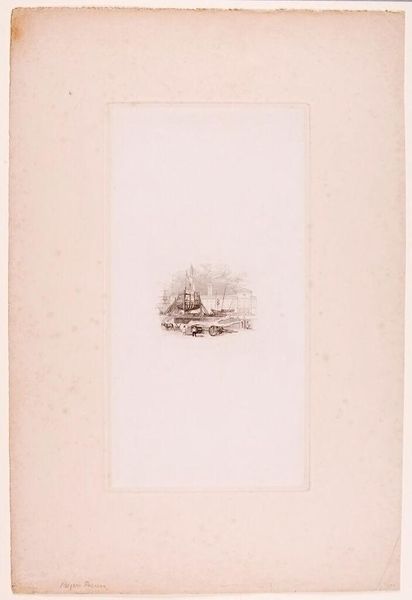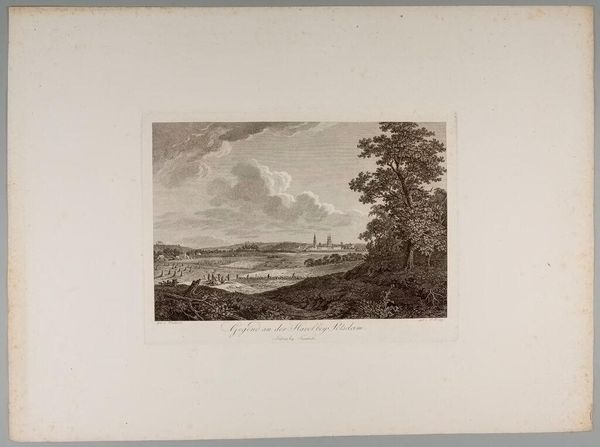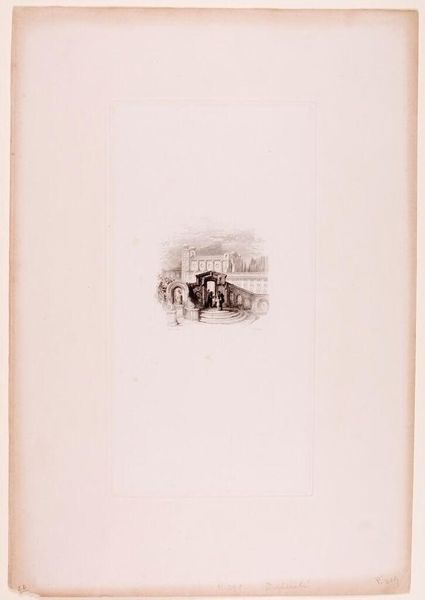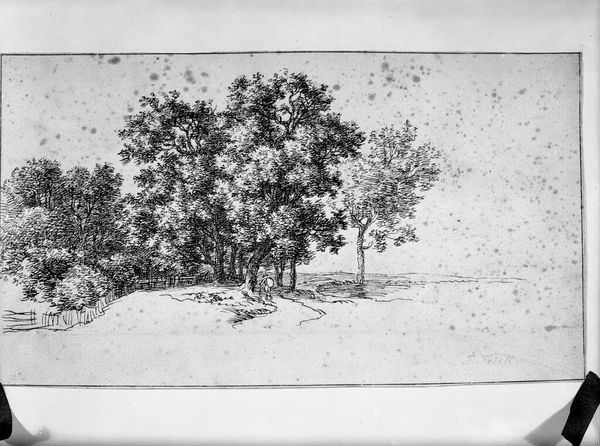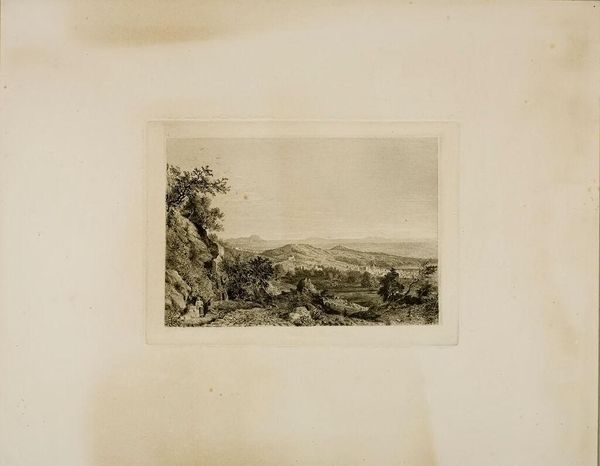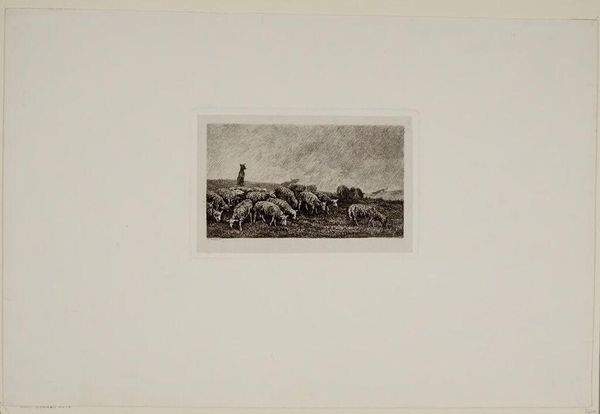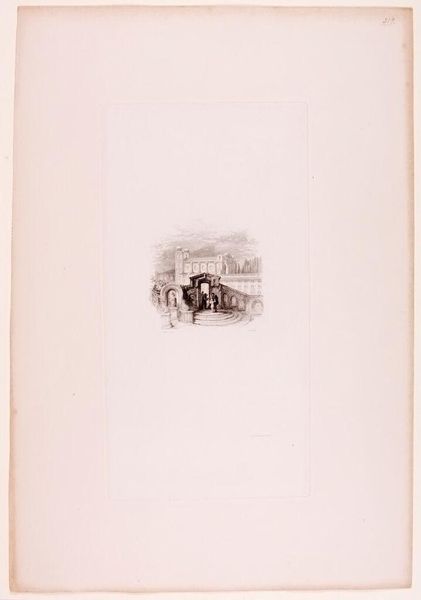
Ikke anvendt illustration til St. St. Blicher: "Mowns". Kirkegårdsmotiv 1886
0:00
0:00
Dimensions: 319 mm (height) x 264 mm (width) (bladmaal), 288 mm (height) x 236 mm (width) (billedmaal)
Editor: Here we have Hans Smidth's 1886 drawing, "Ikke anvendt illustration til St. St. Blicher: \"Mowns\". Kirkegårdsmotiv," created with drawing on paper. I'm struck by the somber atmosphere; it really gives a sense of bleakness. What do you make of this work, especially considering its function as a potential illustration? Curator: It's fascinating how context shifts our understanding. Knowing this was intended for an illustration really opens up avenues of interpretation. Illustrations, particularly at this time, were crucial in disseminating narratives to a wider public, shaping collective understanding of literature and culture. Notice how the desolate landscape emphasizes human insignificance in the face of nature – how might that reflect the themes in Blicher's "Mowns"? Editor: That’s a great point. The way the figure is dwarfed by the landscape does emphasize a sense of powerlessness. Curator: Exactly. Consider too how the medium, a drawing, impacts its accessibility. Drawings allowed for relatively inexpensive reproduction. Was this a conscious choice, allowing for a wider audience to experience the story's somber themes through both text and image? The public role of the art in this way shapes and promotes the social perspective of a very dark topic. Editor: That's something I hadn't considered. It wasn't just about the aesthetic, but also about the reach of the message. Curator: Precisely. The "romanticism" and "realism" come together to make something that's beautiful, though melancholy, accessible to an everyday person in a meaningful way. It's powerful to see how artistic choices become powerful statements within their specific social and institutional framework. Editor: I learned a lot looking at this artwork, particularly understanding its possible social context and accessible beauty that's so unique and affecting. Curator: And seeing art through the lens of its potential public function reminds us that art isn't created in a vacuum, but is actively engaging in conversations within society.
Comments
No comments
Be the first to comment and join the conversation on the ultimate creative platform.
